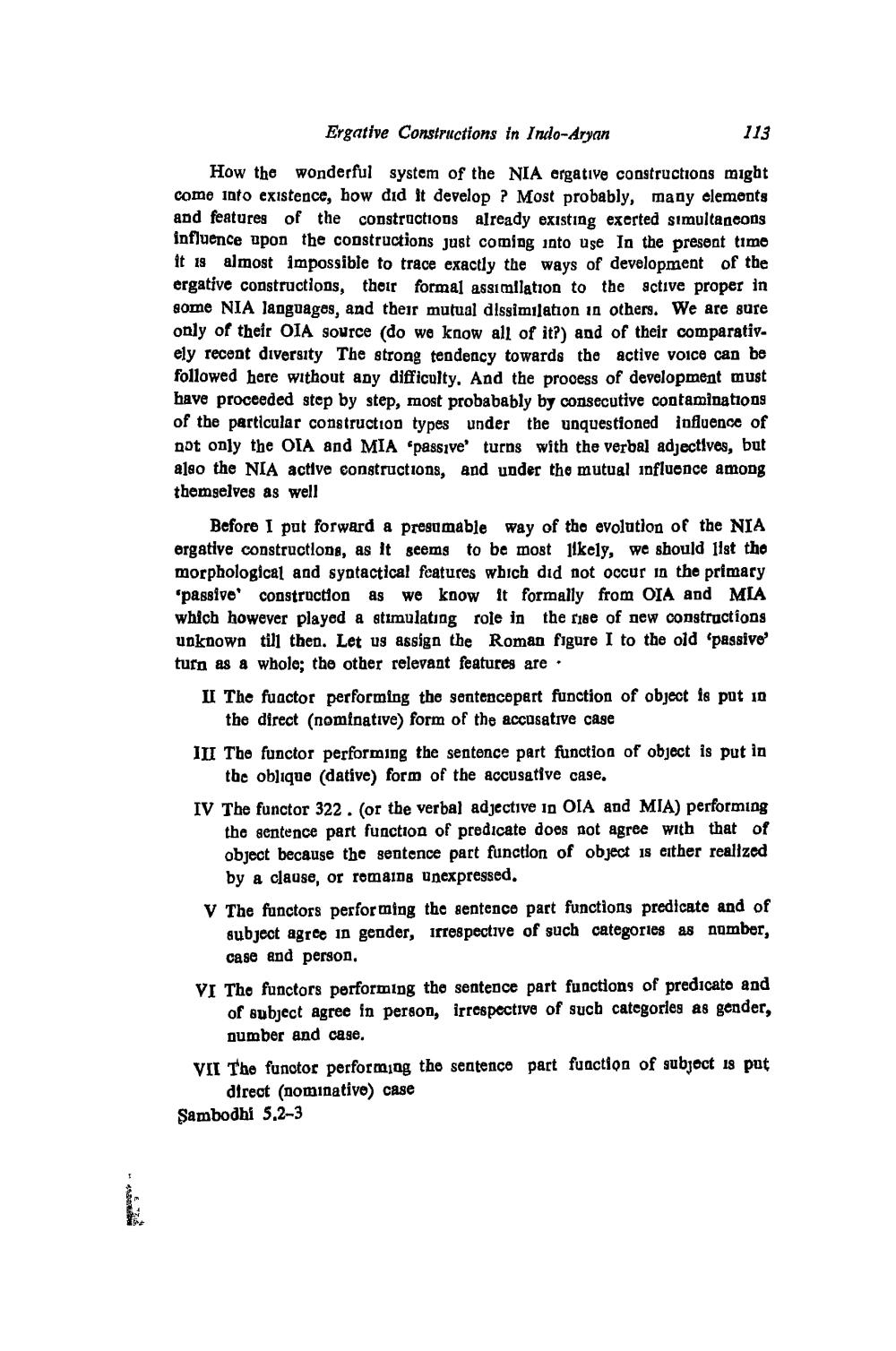________________
Ergative Constructions in Indo-Aryan
113
How the wonderful system of the NIA ergative constructions might come into existence, how did it develop ? Most probably, many elements and features of the constructions already existing exerted simultaneons influence upon the constructions just coming into use in the present time it 18 almost impossible to trace exactly the ways of development of the ergative constructions, their formal assimilation to the active proper in some NIA languages, and their mutual dissimilation in others. We are sure only of their ОIA source (do we know all of it?) and of their comparatively recent diversity The strong tendency towards the active voice can be followed here without any difficulty. And the process of development must have proceeded step by step, most probabably by consecutive contaminations of the particular construction types under the unquestioned influence of Dot only the OIA and MIA passive turns with the verbal adjectives, but also the NIA active constructions, and under the mutual influence among themselves as well
Before I put forward a presumable way of the evolution of the NIA ergative constructions, as it seems to be most likely, we should 11st the morphological and syntactical features which did not occur in the primary "passive' construction as we know it formally from OIA and MIA which however played a stimulating role in the rise of new constructions unknown till then. Let us assign the Roman figure I to the old (passive' turn as a whole; the other relevant features are II The fuactor performing the sentencepart function of object is put 10
the direct (nominative) form of the accusative case III The functor performing the sentence part function of object is put in
the oblique (dative) form of the accusative case. IV The functor 322. (or the verbal adjective 10 OIA and MIA) performing
the sentence part function of predicate does not agree with that of object because the sentence part function of object is either realized
by a clause, or remaing unexpressed. V The functors performing the sentence part functions predicate and of
subject agree in gender, irrespective of such categories as number,
case and person. VI The functors performing the sentence part functions of predicato and
of subject agree in person, irrespective of such categories as gender,
number and case. VII The functor performing the sentence part fuaction of subject 18 put
direct (nominative) case Sambodhi 5.2-3




